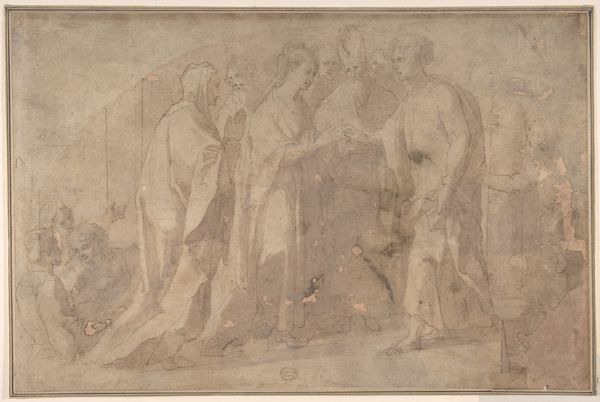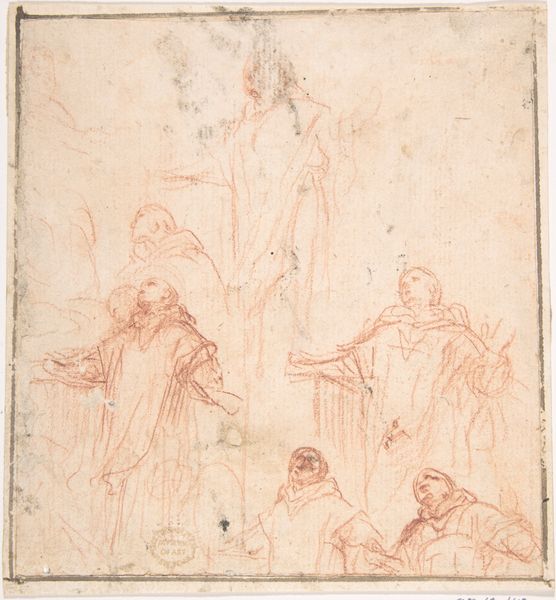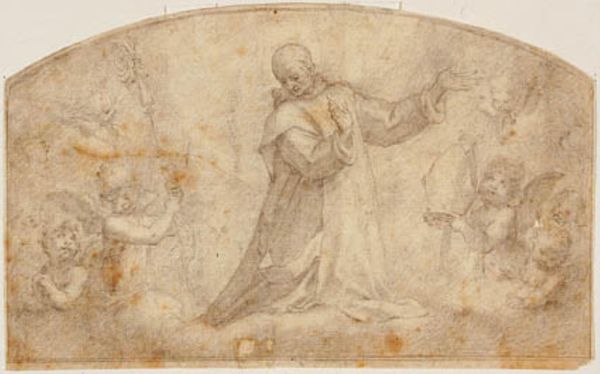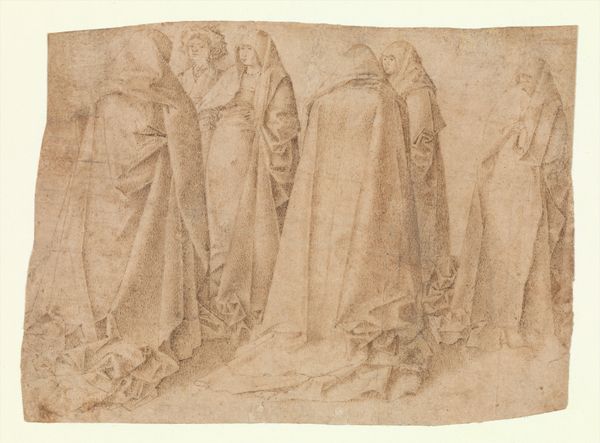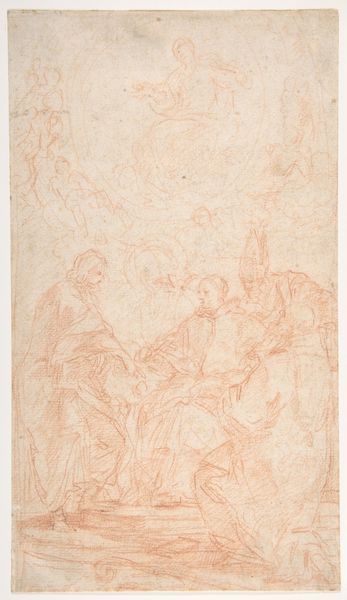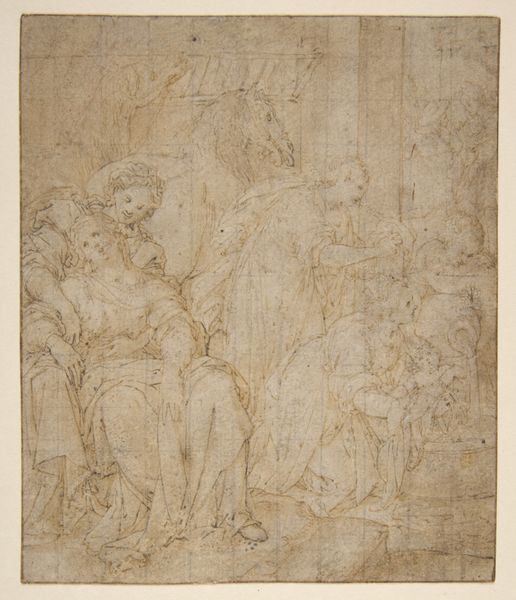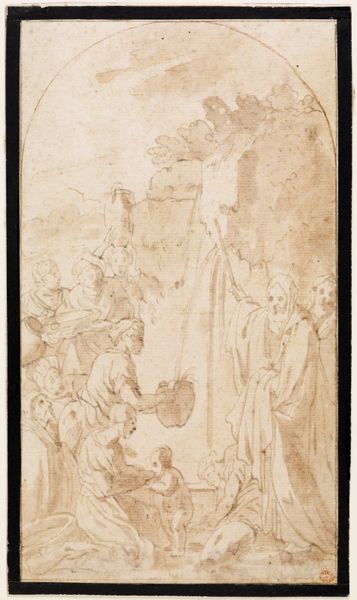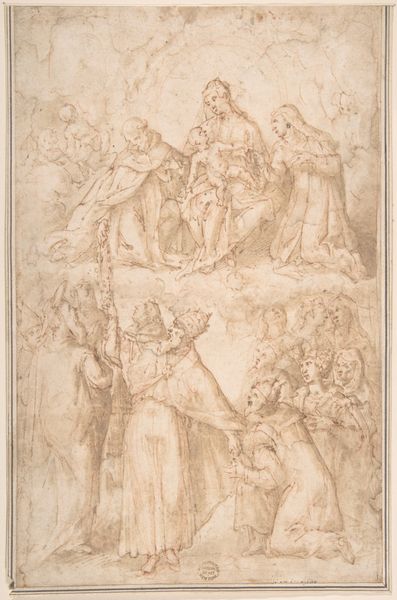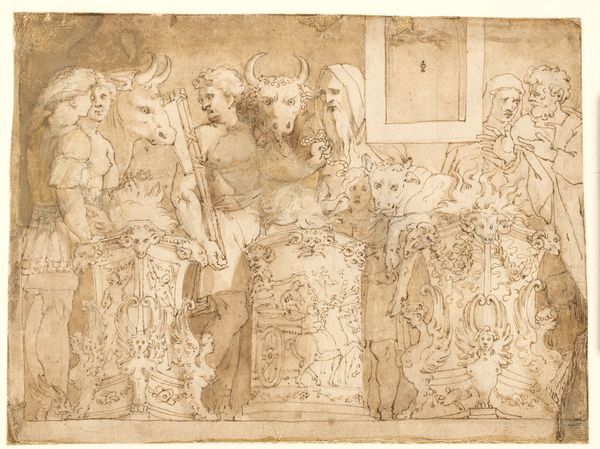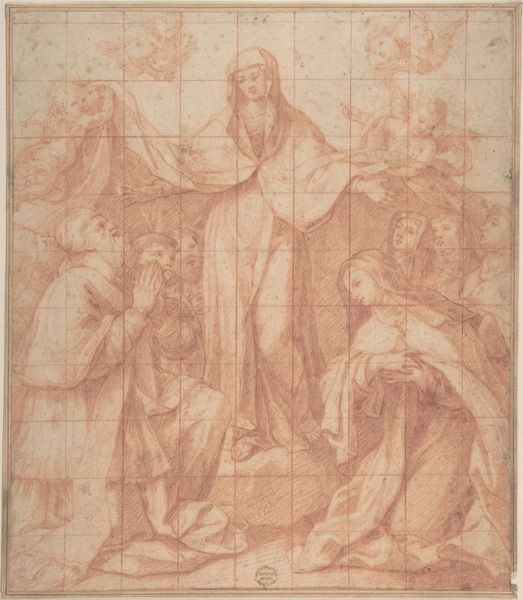
Design for an Antependium: The Madonna della Misericordia with Saints John the Baptist and John the Evangelist, the Circumcision, and the Presentation of the Virgin 1365 - 1372
0:00
0:00
drawing, paper, ink
#
drawing
#
medieval
#
narrative-art
#
figuration
#
paper
#
form
#
ink
#
line
#
history-painting
#
italian-renaissance
#
virgin-mary
#
angel
Dimensions: 5 3/4 x 10 3/8 in. (14.6 x 26.3 cm)
Copyright: Public Domain
Editor: So this is Lorenzo Veneziano's "Design for an Antependium," dating from the late 14th century. It’s ink on paper and currently held at the Met. There's a dreamlike quality, perhaps from the faded ink, which seems fitting considering the subject matter, like a vision of sorts. How do you interpret the role of a design like this, particularly considering its religious context and potential use? Curator: This drawing offers a fascinating window into the production of religious imagery in the late medieval period. An antependium, as a decorated panel for the front of an altar, was a significant site of visual engagement for the faithful. What socio-political conditions shaped its creation? Think about the relationship between the Church and artistic patronage at this time. This was the late Medieval Era. Does the placement of the Virgin, flanked by John the Baptist and John the Evangelist, communicate a certain message or power dynamic within the Church? Editor: I see what you mean, like understanding the artistic intent beyond just religious devotion. The arrangement definitely emphasizes her central role, doesn't it? What about the function of this “design”? Was it literally to show the commissioner what they would be paying for? Curator: Precisely. The drawing functions not just as an aesthetic object, but as a form of negotiation and a demonstration of artistic skill. Think about how the medium itself—ink on paper—affected its circulation. Would this have been widely viewed, or primarily kept within the circles of the patron and workshop? Editor: So it’s less about the individual artistic expression and more about how it played into the social and political context of the commission. Curator: Exactly! It’s about understanding art's active role within specific cultural frameworks, like contracts that establish conditions of creation and display, rather than simply celebrating individual genius. How does thinking about the political implications change your reading of the "dreamlike quality" you noted initially? Editor: Well, now it feels less like a whimsical vision and more like a carefully constructed image intended to convey authority and perhaps even influence. Curator: Indeed. This drawing reminds us that even the most seemingly ethereal images are embedded in very material and political realities.
Comments
No comments
Be the first to comment and join the conversation on the ultimate creative platform.
